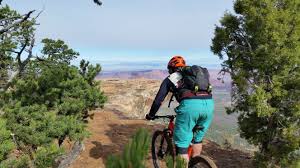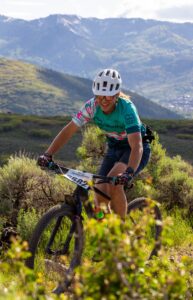Mountain biking is a thrilling adventure that knows no age limit. It’s a celebration of freedom, fitness, and the great outdoors. Senior women are taking to the trails in increasing numbers, discovering the joy and benefits of mountain biking later in life. This guide is for you if you’re ready to join the ranks of these intrepid riders, or if you’re looking to refine your skills and knowledge.
Key Takeaways
-
Understanding the features of a senior-friendly mountain bike is essential.
-
It’s important to start your mountain biking journey with the right gear and knowledge.
-
Staying fit and healthy is crucial for enjoying mountain biking safely.
-
Trek offers a range of bikes that are perfect for senior women riders.
-
Planning your routes and connecting with the mountain biking community enhances the experience.
Choosing the Right Mountain Bike
What Makes a Bike Senior-Friendly?
When selecting a mountain bike, comfort, stability, and ease of use are paramount, especially for seniors. A senior-friendly bike typically features a lower standover height, making it easier to mount and dismount. The handlebars and seats are designed for an upright riding position, which is gentler on the back and provides better visibility. The suspension should be capable of absorbing shocks from uneven terrain, and the gears should shift smoothly to handle hills with ease.
Differentiating Between Bike Models and Features
Mountain bikes come in various models, each designed for specific riding styles and terrains. The main types include cross-country bikes, trail bikes, and all-mountain bikes. Cross-country bikes are lightweight and fast, trail bikes balance climbing efficiency with downhill performance, and all-mountain bikes are built for challenging terrains. Senior riders might prefer trail bikes for their versatility and balance between performance and comfort.

Top Factors to Consider When Selecting a Mountain Bike
When choosing your mountain bike, consider the following:
-
Frame Size: Ensure the bike frame matches your height for a comfortable ride.
-
Wheel Size: Larger wheels roll over obstacles more easily, while smaller wheels offer more maneuverability.
-
Brakes: Look for reliable disc brakes that provide consistent stopping power.
-
Suspension: Decide between a hardtail (front suspension) and a full suspension (front and rear) based on the type of trails you’ll ride.
-
Fit and Comfort: Choose a bike with an adjustable seat and handlebars to find the perfect riding position.
Starting Your Mountain Biking Journey
Essential Gear for Safe Riding
Before hitting the trails, gear up for safety. A properly fitting helmet is non-negotiable. Gloves protect your hands and improve grip, while padded shorts can increase comfort during long rides. Eye protection is also important, as it shields against dust, debris, and the sun’s glare. Lastly, a small repair kit with a spare tube, tire levers, and a multi-tool can be a ride-saver.
Getting to Grips with Mountain Biking Basics
Mountain biking is as much about skill as it is about equipment. Start with learning the basics of body positioning—keep your body loose and centered over the bike. Practice on easy trails, focusing on smooth pedaling, controlled braking, and navigating small obstacles. As you gain confidence, gradually increase the trail difficulty.
Building Confidence on Trails
Confidence comes with practice and familiarity. Begin with shorter, less technical trails and progress as you feel comfortable. Always ride at your own pace and don’t hesitate to walk sections that feel beyond your current skill level. Remember, mountain biking is a personal journey, not a competition.
Staying fit and active is a cornerstone of enjoying mountain biking, especially as we age. It’s about building endurance and strength to handle the trails and making the most of every ride.
Staying Fit and Healthy for Mountain Biking
Exercises to Enhance Riding Stability
Core strength and balance are vital for mountain biking. Incorporate exercises like planks, squats, and lunges into your routine. These movements improve stability and power, which are crucial for maneuvering your bike on uneven terrain. Balance exercises, such as standing on one leg or using a balance board, can also help in refining your riding technique.
Diet and Nutrition for Endurance
What you eat fuels your rides. Focus on a balanced diet rich in carbohydrates for energy, lean proteins for muscle repair, and healthy fats for sustained performance. Hydration is equally important; always carry water and consider electrolyte supplements for longer rides to maintain fluid balance and prevent cramps.
Understanding and Listening to Your Body
Listening to your body is key. Pay attention to what it’s telling you—rest when you’re tired, eat when you’re hungry, and don’t push beyond your limits. Recovery is part of the training process, so ensure you’re getting enough sleep and using rest days to let your muscles heal.

The Best Trek Bikes for Senior Women
Review: Trek Models That Prioritize Comfort and Control
Trek has a reputation for creating quality bikes that cater to the needs of all riders. For senior women, models like the Trek Verve and Trek FX offer a comfortable upright position, easy-rolling tires, and a user-friendly grip shift system. These bikes are designed for ease of use, reliability, and comfort, making them an excellent choice for those starting out or looking to upgrade their current ride.
Features Breakdown: Suspensions, Seats, and Handlebars
When comparing Trek bikes, consider the following features:
-
Suspension: A bike with front suspension can absorb the bumps and shocks of the trail, providing a smoother ride.
-
Seats: Look for a saddle that’s comfortable for long rides, with the right amount of cushioning and support.
-
Handlebars: Handlebars should allow for a natural grip and posture, reducing strain on your wrists and shoulders.
Bike Maintenance Tips to Extend Longevity
Regular maintenance keeps your bike in top condition. Clean your bike after muddy rides, lubricate the chain regularly, and check the tire pressure before every outing. Periodically inspect the brakes and gears for wear and make adjustments as needed. Remember, a well-maintained bike is a safe and reliable one.
Navigating the Trails: A Guide to Routes and Rides
Finding Senior-Friendly Trails Nearby
Start by exploring local bike paths and parks. Many communities offer trails with varying levels of difficulty. Look for paths that are marked as “green” or “beginner” to start, as these will offer a gentle introduction to the sport. Websites and apps like Trailforks and MTB Project can be invaluable resources for discovering new routes that suit your skill level.
Planning Your Routes and Adventure
As you become more comfortable, plan your routes to include a mix of terrains and challenges. Map out your ride to include rest points, especially if you’re venturing on a longer trail. Always let someone know where you’re going and when you expect to return, and carry a cell phone in case of emergencies. For more detailed guidance, check out our skill progression tips for senior MTB riders.
Connecting with Fellow Cyclists
Mountain biking is more than just a solo adventure; it’s a community. Connecting with fellow cyclists can enhance your riding experience, provide motivation, and offer a sense of camaraderie. Join local cycling clubs or groups, participate in group rides, and consider signing up for mountain biking clinics or workshops. These gatherings are not only fun but also great opportunities to learn from more experienced riders and share your own insights.
Sharing stories and experiences can be incredibly inspiring. For instance, you might meet someone who took up mountain biking after retirement and has since completed a cross-country trail. These real-life examples can motivate you to set new goals and continue pushing your boundaries.

FAQ
How do you determine the correct bike size for your height?
To determine the correct bike size, you’ll need to measure your inseam and compare it to the bike’s standover height. The standover height is the distance from the ground to the top of the bike’s frame at the point where your crotch would be if you were standing over the bike. Ideally, there should be about 1-2 inches of clearance between you and the frame. Bike shops can help you with measurements and suggest the right frame size for your height and leg length.
What is the difference between a standard and a women-specific mountain bike?
Women-specific mountain bikes are designed with the female anatomy in mind, featuring a shorter top tube for a more comfortable reach to the handlebars, a wider saddle to accommodate wider sit bones, and sometimes smaller grips for smaller hands. They also tend to have a lower standover height to make it easier for women to get on and off the bike. However, the best bike is the one that fits you best, regardless of whether it’s labeled as women-specific or not. For more information, read about the mountain biking benefits for senior women riders.
Can mountain biking be safely taken up later in life?
Absolutely! Mountain biking can be a safe and enjoyable activity for individuals of all ages, provided you take the appropriate precautions. Start with the right equipment, choose trails that match your fitness level and skill, and don’t hesitate to take lessons to improve your technique. Always listen to your body and ride at a pace that feels comfortable for you.
What maintenance tasks are essential for keeping a mountain bike in good condition?
Keeping your mountain bike in good condition involves regular maintenance tasks such as checking the best Trek mountain bikes for detailed guides on care and upkeep.
-
Cleaning your bike after each ride to remove dirt and grime.
-
Lubricating the chain regularly to ensure smooth pedaling.
-
Checking the tire pressure before every ride to prevent flats and ensure optimal performance.
-
Inspecting the brakes for wear and ensuring they’re properly adjusted.
-
Checking the gears and making adjustments as necessary to maintain smooth shifting.
Regular maintenance not only extends the life of your bike but also ensures a safer and more enjoyable ride.
How do you build up to longer and more challenging rides?
To build up to longer and more challenging rides, start by gradually increasing the distance and elevation gain of your rides. Incorporate interval training into your cycling routine to improve your stamina and endurance. Rest and recovery are just as important, so make sure to allow your body time to adapt and heal between rides. And most importantly, enjoy the process and celebrate your progress along the way!
Mountain biking is an excellent way for senior women to stay active and enjoy the outdoors. With the right equipment, such as Trek’s senior-friendly electric bikes, even those who haven’t ridden in years can rediscover the joy of cycling and maintain a healthy lifestyle. It’s important to choose bikes that offer comfort, stability, and the right level of power assist to ensure a safe and enjoyable experience on the trails.


